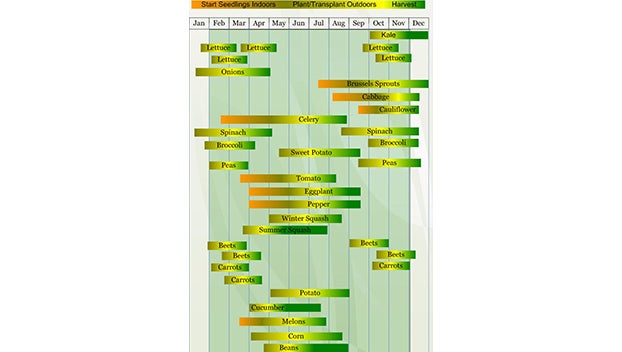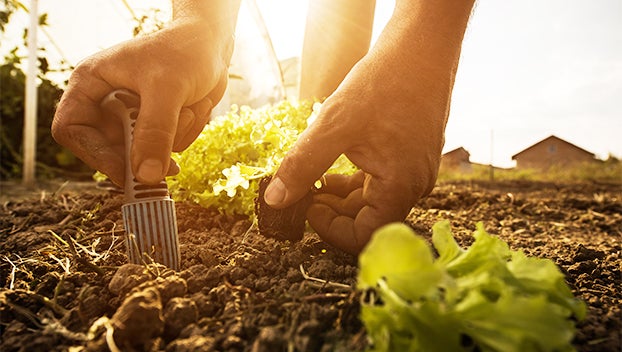MASTER GARDENER — It’s time to plant for fall vegetable gardening
Published 12:02 am Thursday, September 15, 2022
|
Getting your Trinity Audio player ready...
|
Fall is in the air…well almost! Autumn officially begins in a couple of weeks, on the 22nd of September to be exact. Soon lower humidity and cooler temperatures will be upon us.
It’s a great time to begin fall cleanup and preparation for vegetable gardens. September is a swing month in the garden, or as I like to call it a “preparation month,” since many gardeners, including myself, consider fall the best time for planting cool season vegetables, trees and shrubs.
Summer remains (though his days are numbered) unvanquished, but fall’s cool breath is very close at hand.
Most soils in Southeast Texas are acidic clay, and many vegetable plants do not grow or produce well in acidic soil. Acidic soils can be adjusted into a pH range better for plant growth with applications of agricultural limestone.
But the only way to know whether your soil needs lime, and how much to add, is by having your soil tested by a soil testing laboratory. Texas A&M University and Stephen F. Austin State testing labs are where you can have your soil analyzed for a small fee. Contact your local County Extension office for information on how to capture soil samples.
The small investment is money well spent and provides valuable information!
Vegetables to Plant in Fall
If you had a spring garden, top dress the soil by adding organic matter such as composted manure and humus to “refresh” the planting area with nitrogen and turn the organic material into the soil before planting to provide an initial supply of nutrients.
If making a new garden, add a complete fertilizer, such as 8-8-8 or 10-10-10, then apply a 2-inch layer of organic matter (compost) before planting.
For Fall and Winter harvest, the following vegetables and herbs can be sown or transplanted this month: Arugula, Basil, Bush Beans, Beets, Broccoli (transplant), Brussels Sprouts (transplant) , Cabbage (transplant), Carrots, Cauliflower (transplant), Chives, Collards (transplant), Cucumber, Daikon, Endive, English peas, Garlic, Kale, Kohlrabi, Leek, Lettuce, Mint, Mustard, Onion, Pak Choi, Parsley, Rosemary, Summer Squash, Swiss chard, Spinach, Tatsoi, Radish, and Tarragon (Mexican), and Turnip greens.
Using transplants from your local garden center or feed store will get the garden of to a quick start, but seeds provide a far wider variety from which to choose.
Thoroughly soak the seed furrows with water before sowing seeds increases seed germination and emergence, then lightly mulch. Never allow the seed bed to dry out – water daily or every other day, until germination begins.
Harden off transplants by slowly introducing them to full sun a few hours daily, until they can manage the suns full intensity for more than 8 hours. It takes several days to acclimate transplants before planting or provide transplants a temporary shade structure in the garden until they are established.
Let’s use a chart or rather, a planting calendar to make seasonal planting easier and to provide a detailed view of planting timelines. Gardeners ought to maintain a garden planner (I use a leather-bound logbook where I draw and label each bed and row) to document vegetable type and variety, planting location, date planted, fertilized, and harvested.
Place notes for each vegetable, such as did they grow well? Heat and pest tolerant? Or ample harvest?
The gardener planner will also assist you ensuring crop rotation.
Vegetable Planting Calendar
The planting calendar highlights the optimal time to plant vegetables for our growing seasons, in USDA Zone 9a, which typically lasts from late February to early December. Our planting season extends all the way to the end of the year if the days are mostly sunny and warm.
The vegetable planting calendar helps gardeners plan when to start seeds indoors, or when to start or transplant seeds/seedlings outdoors, and roughly when to expect to harvest crops from seeds planted.
Each vegetable has a variety of types, each one with a slightly different growing season, and length. In general, the information listed on your seed packets will be most accurate and should be followed if there is any discrepancy.

With our local Zone 9a, garden-friendly climate parameters, use this month-by-month planting calendar as a guide for an entire vegetable garden planting year (Image courtesy veggieharvest.com).
The vegetable planting calendar can also assist in scheduling garden events, as well as selecting complimentary garden vegetables for growing in your garden.
For example, once the onions are harvested in the late summer, a quick-growing cool-weather crop such as lettuce, spinach, or beets could easily be grown where the onions once were. This allows an additional set of vegetables to be grown from the same garden plot.
Fellow gardeners let’s grow ourselves a greener, more sustainable world, one plant, at a time!
John Green is a Certified Texas Master Gardener. If you have gardening questions or need more information, contact the Orange County Master Gardeners Helpline at 409-882-7010 or visit txmg.org/orange, Orange County Texas Master Gardeners Association on Facebook or email extension@co.orange.tx.us.






